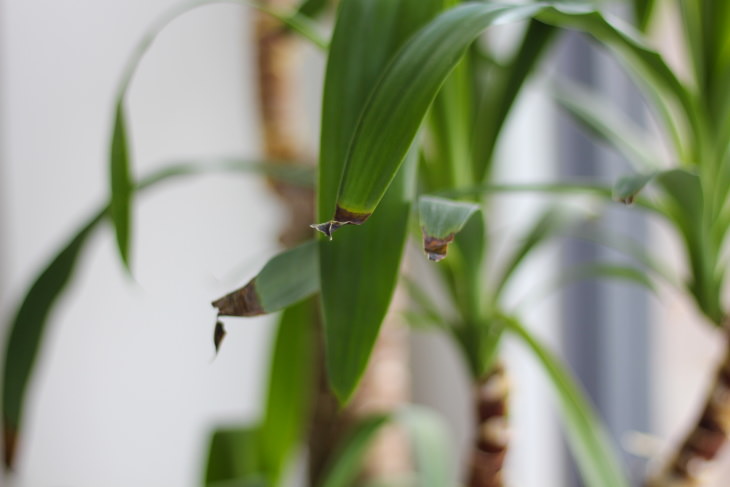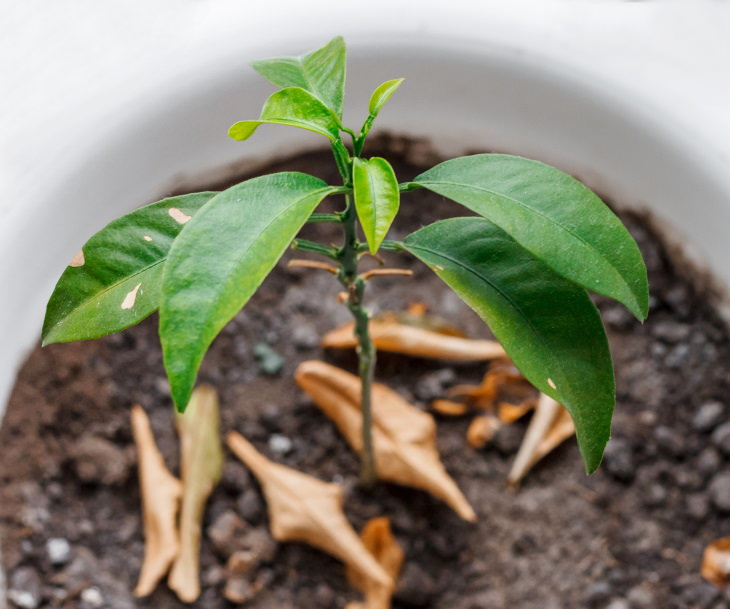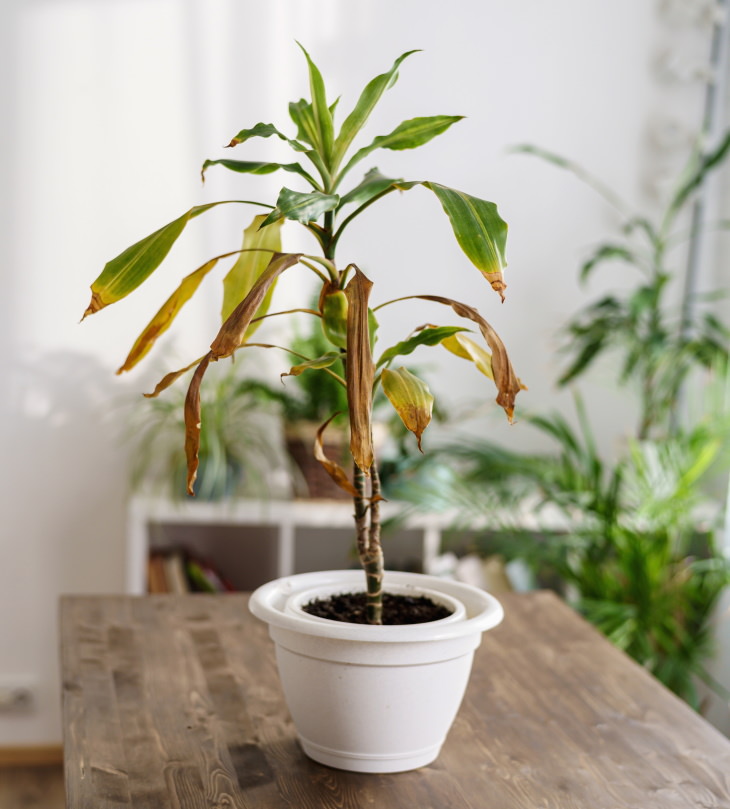

Brown leaves can refer to a variety of “symptoms”: a plant’s leaves turning brown, an entire leaf turning yellow and then brown, or brown spots on the leaves. In many cases, brown leaves are not a cause for concern. Many plants shed old leaves as they grow and develop. Likewise, some plants naturally drop a few leaves when you’re repotting or moving them to a new location. Both scenarios are harmless and require no extra care or troubleshooting.
However, brown leaves can also be a sign of disease or improper care. If you notice that a lot of leaves are turning brown or falling off at once, it may be due to one of the following care issues:
Brown tips on your houseplant’s leaves can point to inconsistent watering habits. When a plant bounces between overwatering and drying out too much, it’s a pretty stressful environment for the plant. Every type of plant has specific watering needs. So after you purchase a plant, make sure to read about it or ask about the plant’s needs at the garden center. Moreover, watering needs may change with the seasons - your plants will need less water in the fall and winter than they do during the warm months.
Here are a few tips that will help keep your plant healthy:
Related Article: Why Are Your Houseplant’s Leaves Curling Up?

If the browning starts at the leaf tip and feels crunchy to the touch, but the remainder of the leaf looks healthy, your plant is likely not getting enough humidity. Dark spots can also be a sign of low humidity. Many indoor plants have originated from the tropics, and they will benefit from a daily misting. You can also try grouping several plants together, putting vases with water next to plants, or placing the flower pot on a tray with pebbles and water to keep humidity levels high. Lastly, you can place an air humidifier next to your plants if you have one to make sure that your plants are receiving enough humidity.
If you live in an area with hard water or tend to overfertilize your plant, the salts present in water and fertilizer can build up in the soil and render the plant’s leaves brown. Some plants, particularly tropical ones like calatheas, are more sensitive to salts than others and will react faster. Try to water your plant with filtered water and see if that remedies the issue. If you think that overfertilizing is the culprit, stop fertilizing for a month or so and see if that helps.

Fertilizer salts tend to build up in the soil over time, which is why you should probably repot your plants using fresh potting mix every 1-2 years. If your plant is growing too big for your pot and it’s stunting the plant’s growth, brown leaves can develop as well.
Certain pests, especially sucking parasites like mealybugs and aphids can hide under the leaf or in tiny crevices between the leaf and the stem. Examine your plant for pests and act accordingly. For a quick guide to pests, go here - Houseplant Pest Guide - How to Identify & Fight Them.
Root rot and certain viral diseases can lead to brown leaves too. We cover the diseases that cause brown leaves very thoroughly in this article: How to Identify and Manage 10 Common Plant Diseases.
Maybe you’ve just turned on the winter heating or you placed your plant closer to a sunny window and it got a bit too much heat. This often occurs together with too little water and causes not only brown leaves but also wilting. To remedy the issue, move the plant to a more shady location.
Removing the leaves is the only viable solution. To do so, take a pair of clean (ideally disinfected) and sharp scissors and cut off the damaged parts of the leaf in one quick snip. Chances are, you’ll only need to cut off a few brown tips. If the majority of the plant is affected, however, wait for new leaves to emerge before you trim or cut off any leaves.
Share these tips with those who have indoor plants!